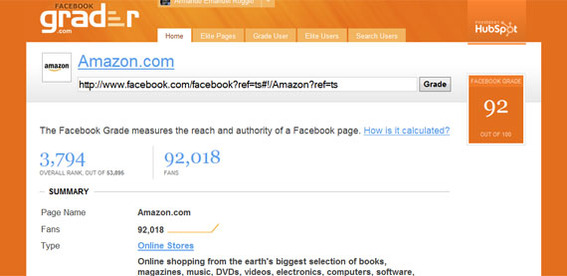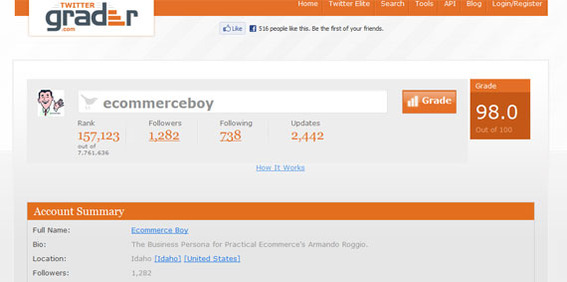Social marketing has emerged as one of the best ways to connect with consumers online. And tracking how well your business’s social media marketing is performing has become a vital measurement of ecommerce marketing measurement.
Yet with so many metrics and statistics to follow, it can be difficult to know what to monitor and what to ignore. This article is the third in a series aimed at identifying performance metrics that the small-to-medium sized ecommerce business should monitor.
In Part 1, I reviewed some important financial and web traffic metrics. In Part 2, I added a more web analytics metrics and addressed the importance of page-loading speed. In this installment, the topic is social-marketing measurements.
Social Marketing
According to the most recent data, Facebook has more than 500 million users. That means that about 7.2 percent of the world’s 6.8 billion people use this popular social media site. Approximately 250 million users check in to Facebook on a given day, according to Facebook.
In a typical month, Facebook users post 30 billion status updates, Likes, photos, videos, and business reviews. What’s more, the typical Facebook user has “Liked” 80 community, group, or business pages.
With so much activity, it is little wonder that marketing on sites like Facebook, and on microblogging site Twitter, has become so important.
No. 13: Facebook Fans
When a consumer “Likes” your business’s page on Facebook, that person is your “Fan.” Fans see your business’s posts in their Facebook News Feeds. If you publish a new coupon on Facebook, your Fans should see it.
Fans can also post on your page’s wall, leaving praise, voicing concerns, or posting pictures and video, all of which tend to bring in more fans.
Detail of Amazon’s Facebook page showing the number of Amazon’s Facebook fans.
Put simply, Facebook Fans have given your business permission to market to them. The more Fans you have, the more powerful your marketing.
Check your Fan count at least weekly, consider posting useful information, running contests, or adding coupons to your Facebook page to increase your Fan base.
No. 14: Hubspot Facebook Grade
Hubspot, a software provider specializing in inbound marketing tools, has an excellent and free service called Facebook Grader. The tool awards a score from 0 to 100 based on (1) how many fans you have; (2) how well connected your fans are (how many friends they have); and (3) how complete your Facebook page is.
Monitor your Hubspot Facebook Grade at least monthly and whenever you run a Facebook-centric campaign. To improve it, focus on completing your page and adding interesting content.
Amazon.com on Hubspot’s Facebook Grader.
No. 15: Twitter Grade
Hubspot also offers a free Twitter Grader. Similar to the company’s Facebook Grader, Twitter Grader awards a score based on a number of factors, including (1) how many followers you have; (2) how connected your followers are; (3) how often you post updates (more is not always better); (4) your ratio of following to followers; (5) general engagement; and several other factors.
Moving your score up over time is an indication that you’re improving your social marketing.
Screenshot of Hubspot’s Twitter Grader.
No. 16: Twitter Followers
Twitter’s stream of information moves much faster than Facebook’s News Feed. So it is likely that only a portion of your followers will see any given tweet. This means that you need to make your tweets count. Do your best to provide links and resources that benefit potential followers and monitor your follower count at least weekly.
Detail of Twitter page showing the number of followers.
No. 17: YouTube Subscribers
The Internet is a broadcast medium, and YouTube is the world’s favorite channel. According to comScore, an Internet tracking firm, YouTube shows something like 10 billion videos per month.
Ecommerce merchants can establish channels and provide both product-focused content and entertainment. In YouTube, the key metric is subscribers. These are YouTube users that are reminded each time you post a new video.
Like Facebook and Twitter, you want to monitor your subscribers on at least a weekly basis. Pay special attention before and after you post a new video.
Summing Up
Social marketing is an excellent way to engage with consumers, earning their permission to build relationships and effectively market to them in a way that adds value. Measuring your social media success is often about counting fans, followers, and subscribers. Each of these metrics gives you a real number to aim for and a real indication of how well your content is being received.





